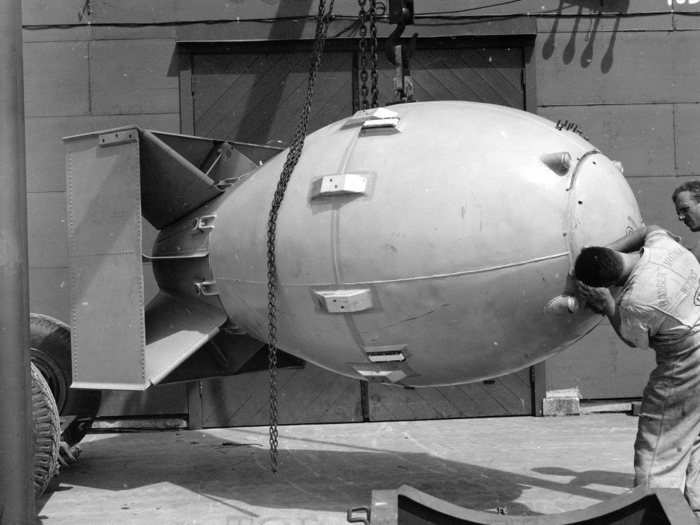- Home
- Military & Defense
- Inside the secret cave hideouts used by Syrian rebels and families
Inside the secret cave hideouts used by Syrian rebels and families
Mariam, a 9-year-old girl, carries her brother as she stands with other children at an underground ancient cemetery in Jabal al-Zawiya in the southern countryside of Idlib, Syria, November 26, 2014. Residents are fleeing to ancient caves and cemeteries for safety during shelling from forces loyal to President Bashar Assad.

Many of the caves were once used during the Roman period but were abandoned and sealed for centuries. Some now serve as makeshift homes for families as they wait for the shelling to end.

Residents take shelter in a similar cave near Hama in this photo from 2012. The civil war has been raging in Syria for almost five years.
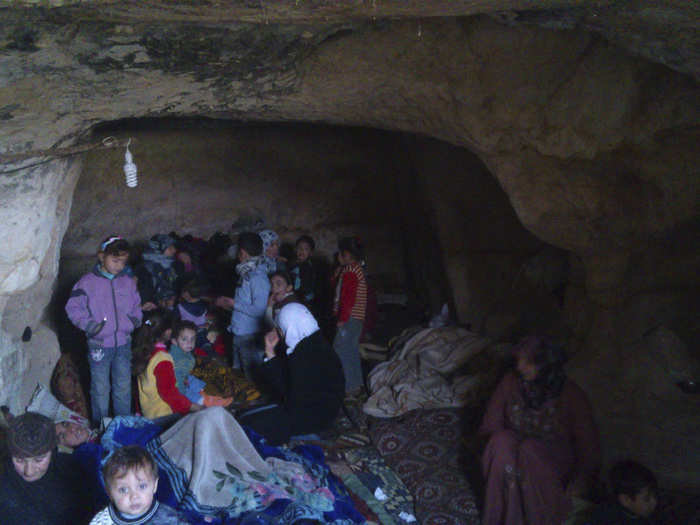
A displaced girl poses inside an underground cave in the southern countryside of Idlib on November 26, 2014. She's one of over 11 million people displaced by the fighting in Syria, according to the UN.
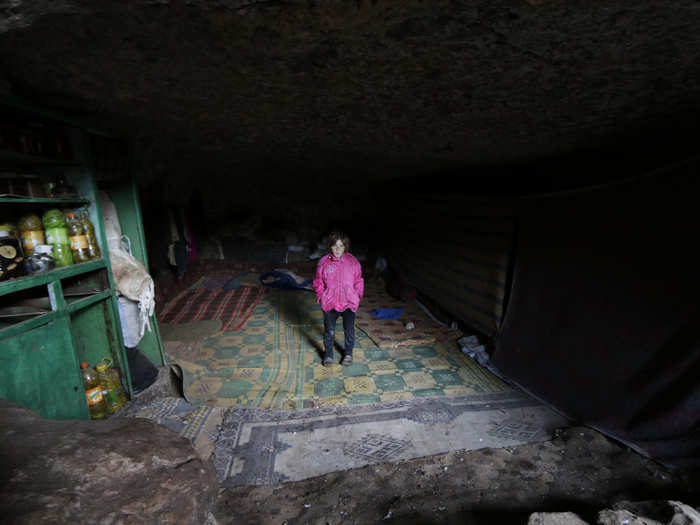
A Syrian family is pictured outside a cave they fled to in fear of shelling, at the Al-Arbaeen mountain in Idlib province.
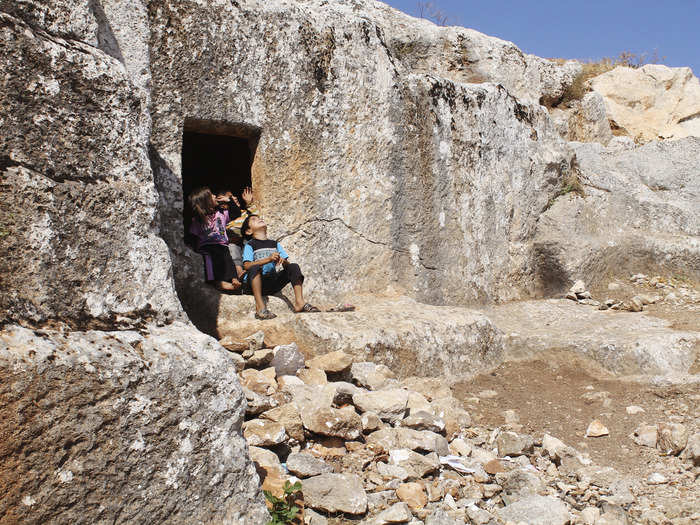
Sources inside of Syria estimated that tens of thousands of people are sheltering in caves, according to The New York Times.
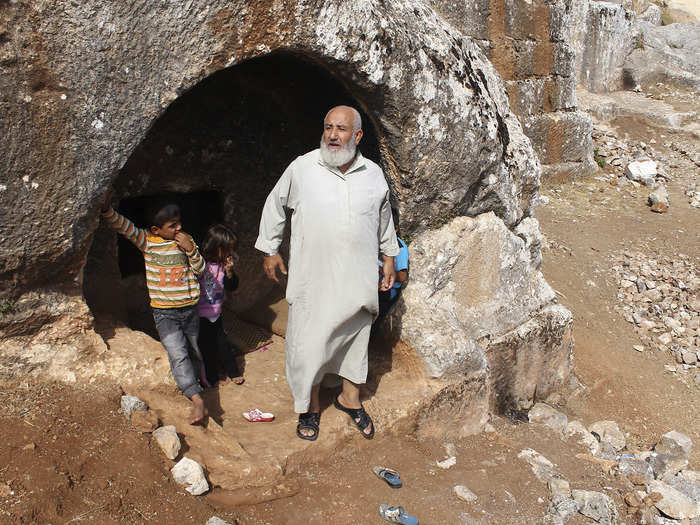
Those who do not have access to natural caves create underground shelters, often beneath their current homes. Here, a man is seen in a cave that is used as a shelter, under his house, in Kafruma, an area in the province of Idlib.
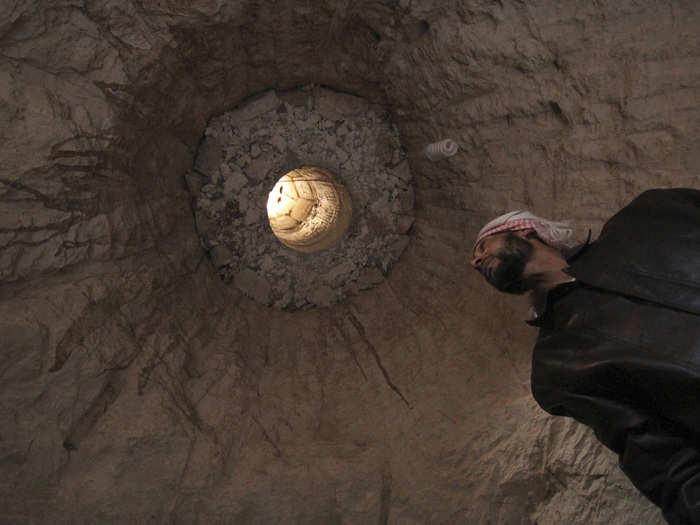
Even children help dig the shelters.
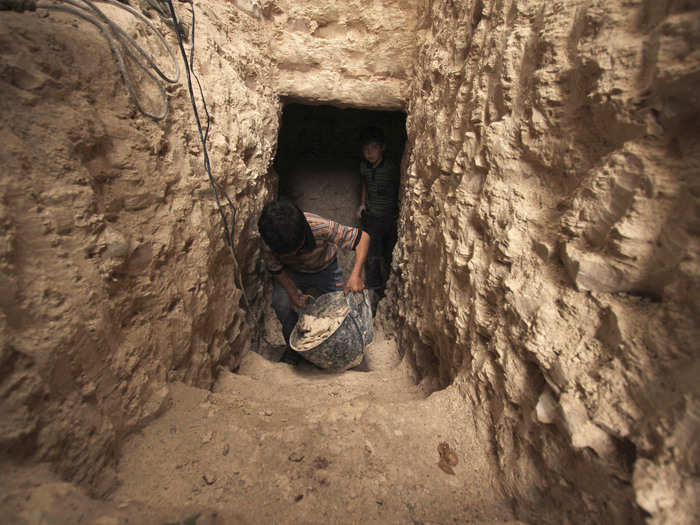
Others create spaces away from their homes. Here, residents dig tunnels and caves in mountains to be used as bomb shelters in Deir al-Zor, Syria.
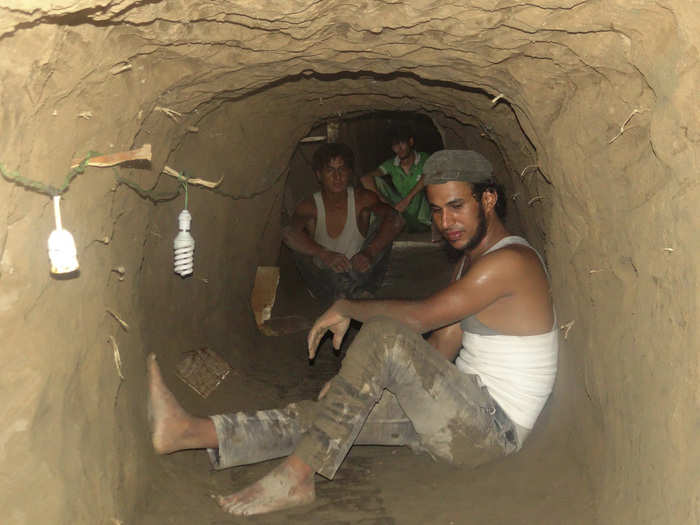
Anti-Assad rebels use the caves, too. In this March 2015 photo, fighters sit outside caves which they dug to be used as shelters and to hide their tanks in al-Latamna, in the northern countryside of Hama.

A rebel fighter of al-Badiya brigade in Jaysh al-Islam carries his weapon as he comes out from one of the caves used as shelter in al-Latamna town. The tunnels and caves created by the rebels can be very complex.
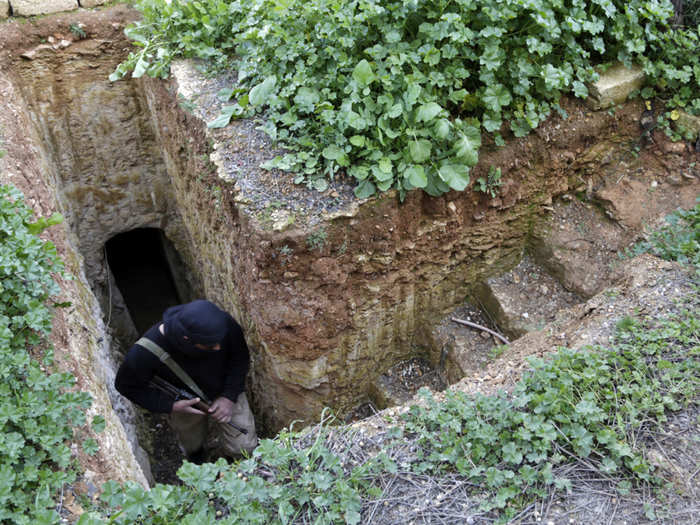
The caves are used by the rebels as meeting places for planning and communication. Here, Free Syrian Army fighters work on a computer inside a cave in Maaret al-Naaman, in Idlib.
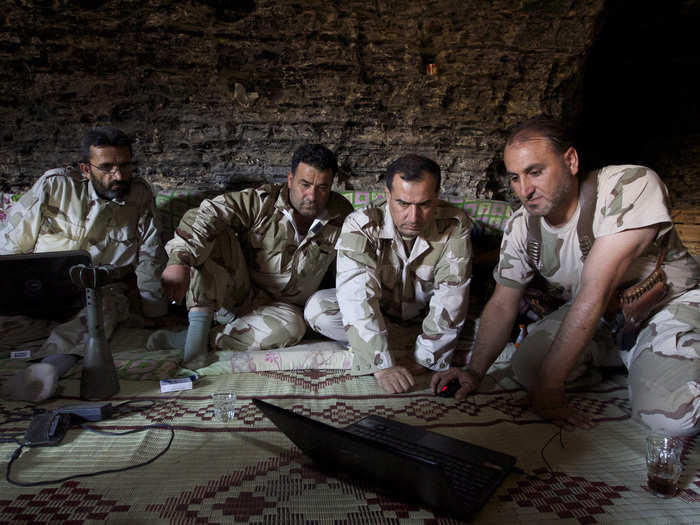
Because of their high placement, the caves can also be used as strategic vantage points for ambushes and live fighting. Here, a rebel fighter fires his weapon at the frontline against forces loyal to Assad in the al-Amriyah neighborhood of Aleppo.

As an added benefit, rebels can hide, store, and prepare ammunition in the caves, like this one in Maaret al-Naaman village, in Idlib.
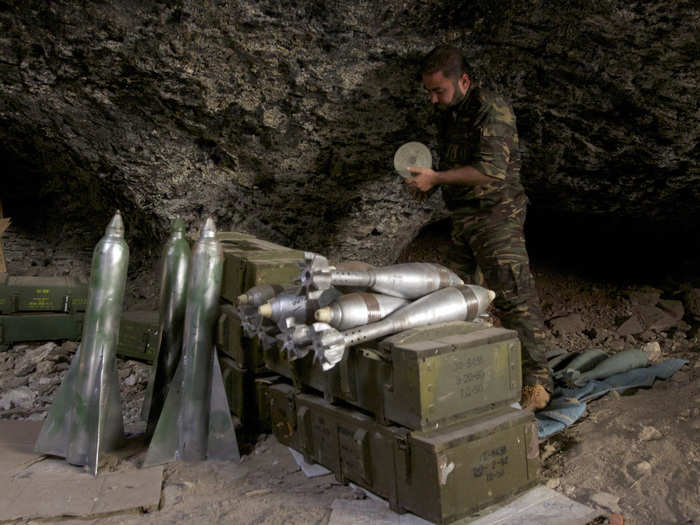
They also use the caves as a place to rest, as these Free Syrian Army fighters are doing in a shelter under Maaret al-Naaman village, in Idlib October 17, 2013.
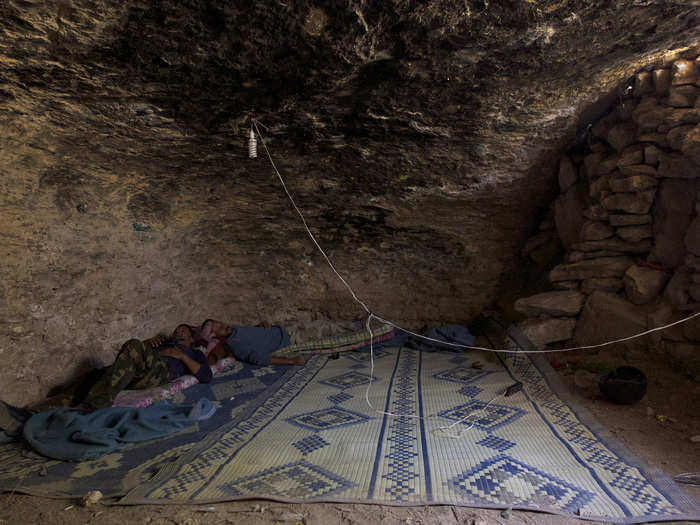
But soon, it's back to work.
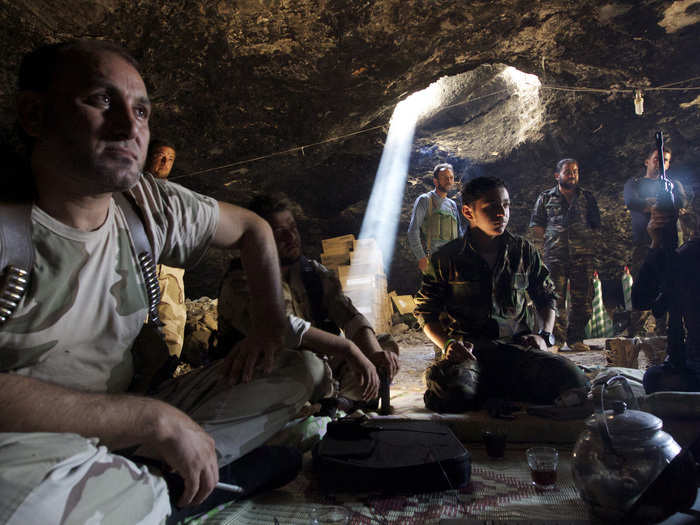
The caves are often compromised. Below, forces of Syrian President Assad inspect a base where caves were dug by rebel fighters in Zor al-Mahruqa village on October 6, 2014.
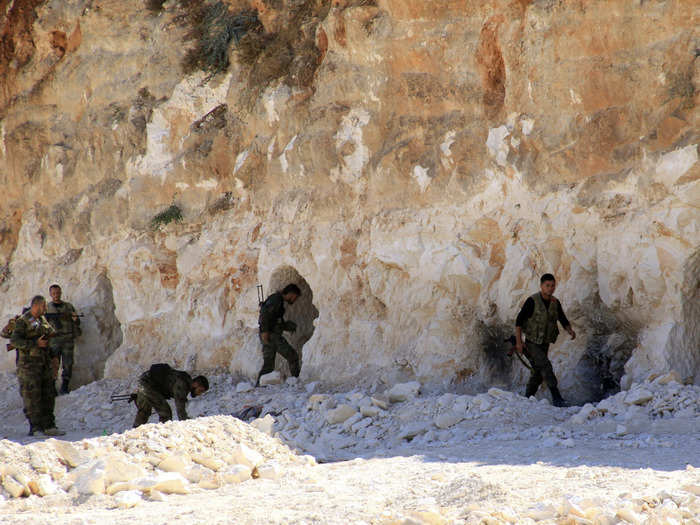
Once they enter the cave, the regime troops attempt to find any rebel soldiers, ammunitions, or supplies that are left over.
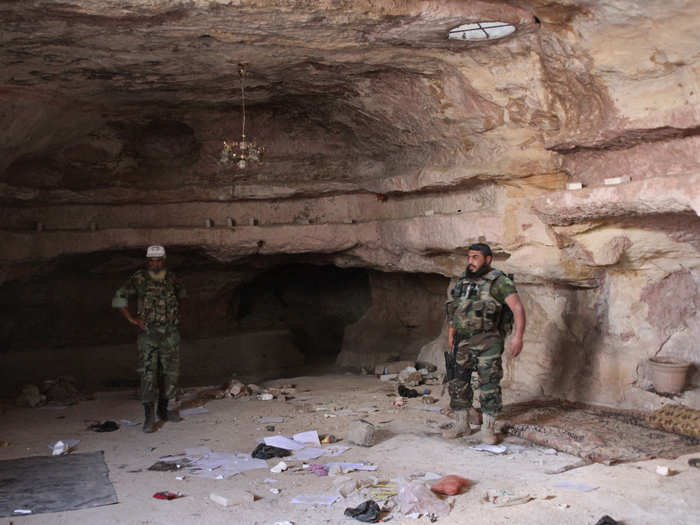
Often they find the caves deserted, like this abandoned base that used to belong to rebel fighters in the Zur-Almsalq village.
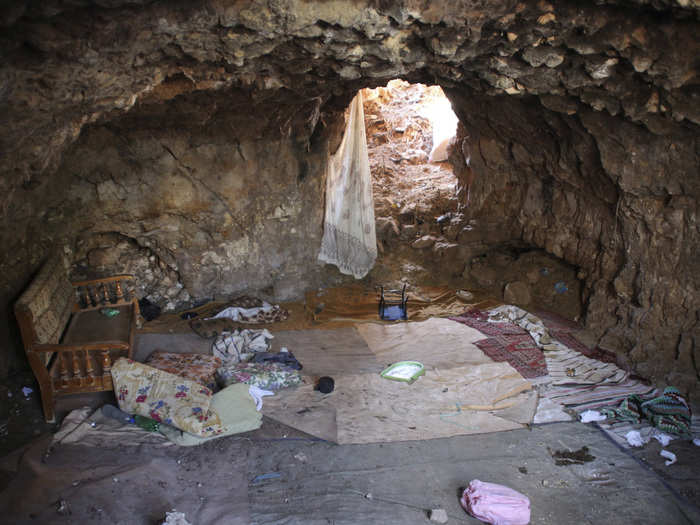
Other times, rebels are not so lucky. That's when the labyrinth of tunnels and entrances comes in handy, allowing them to escape and keep the fight against the Assad regime going.
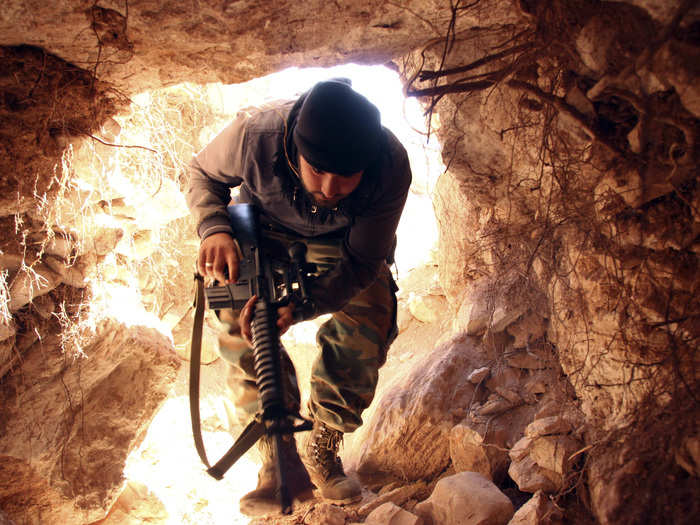
Popular Right Now
Popular Keywords
Advertisement
